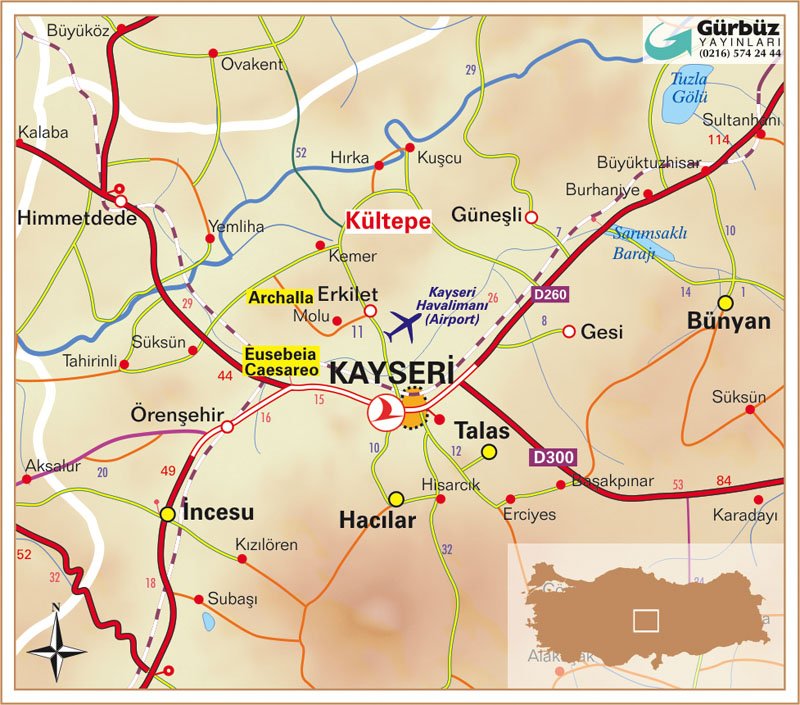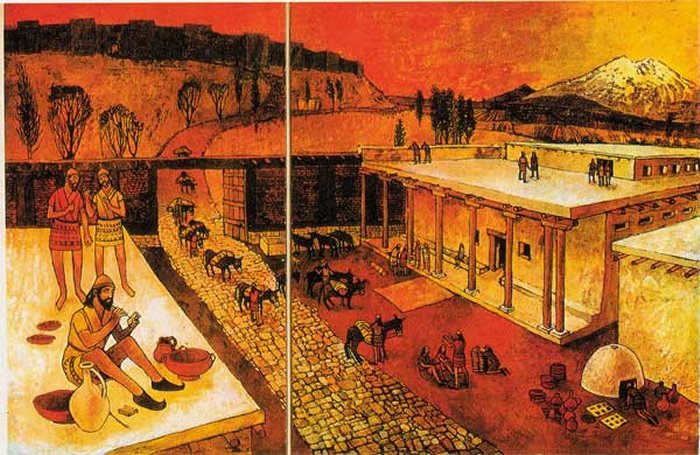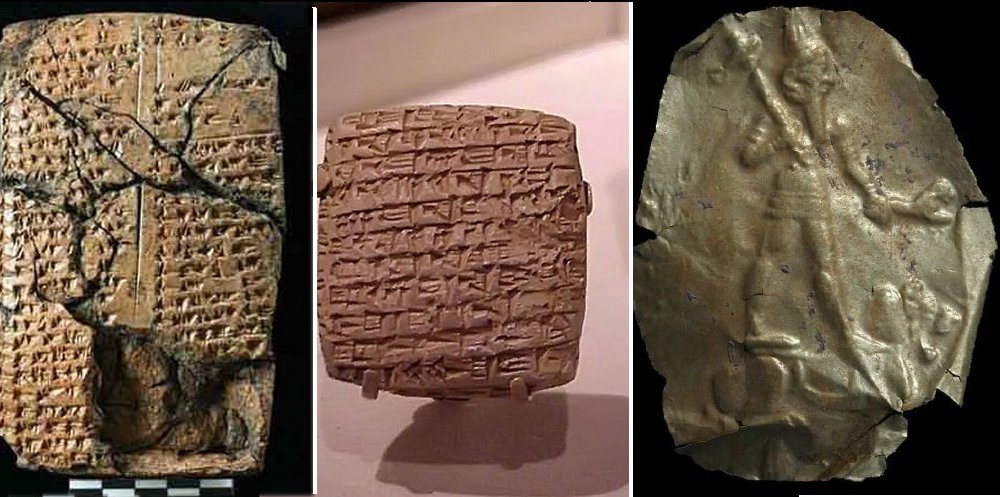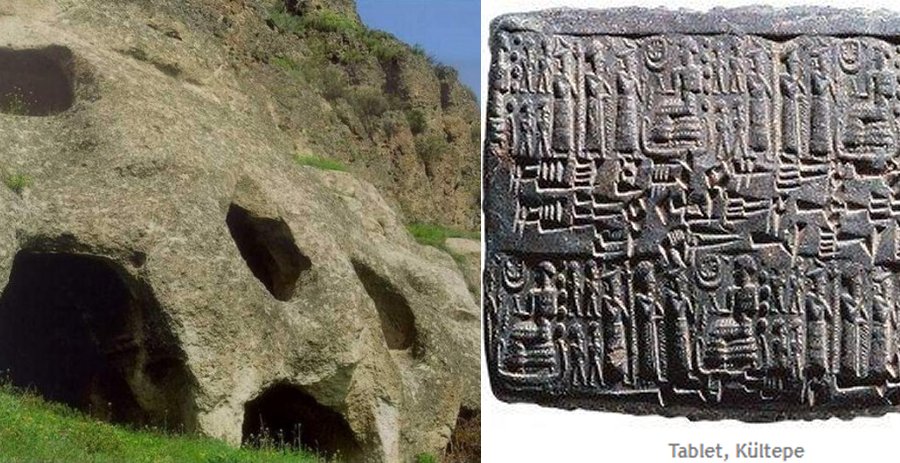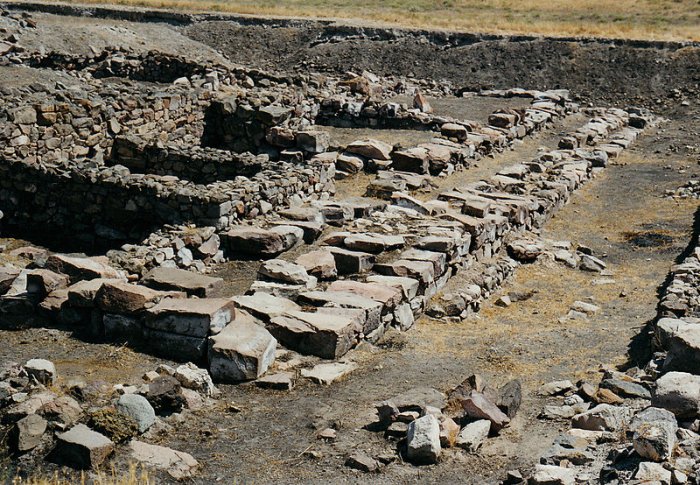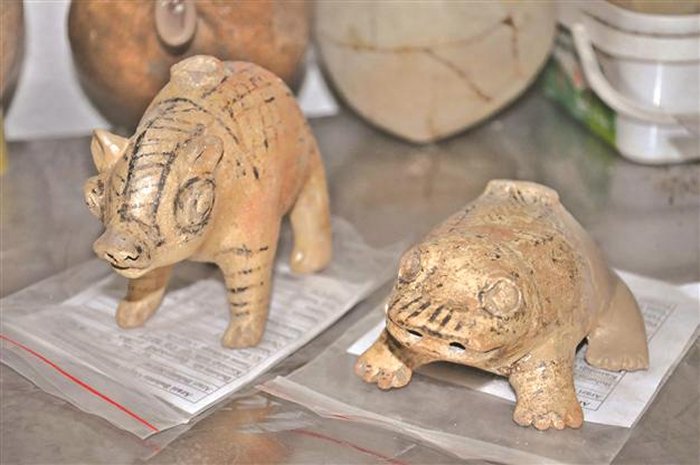Kültepe: Once Part Of The Kingdom Of Hittites And The Center of a complex network of Assyrian trade colonies in the 2nd millennium B.C.
A. Sutherland - AncientPages.com - Mysterious Kültepe was once part of the kingdom of the Hittites. Excavations revealed ancient artifacts, clay tablets, and intriguing prehistoric structures. Kültepe still has much to reveal.
Kültepe, in Turkish means “Ash Hill,” is an archaeological site located in the Kayseri Province. In the past, it was the capital of the ancient Kingdom of Kanesh and the center of a complex network of Assyrian trade colonies in the 2nd millennium B.C.
The place became a key center of culture and commerce between Anatolia, Syria, and Mesopotamia by the end of the 3rd millennium B.C. and especially during the first quarter of the 2nd millennium B.C.
Over 20,000 Clay Tablets From Cappadocia Discovered
In 1948, archaeologists started to excavate the site and they discovered tens of thousands of archaeological and textual finds.
According to UNESCO, Kültepe is not only a site of utmost importance for Anatolian archaeology, but also for world archaeology. The private archives of the Karum residents have yielded 23,500 clay tablets and envelopes to date.
These are the earliest written documents that illustrated ancient Anatolian history. Life, society, and economy at this site, even the family affairs and personal relationships of its inhabitants, were recorded on clay tablets in the Old Assyrian dialect of the Akkadian language using the cuneiform (wedge-shaped) script, the knowledge of which came into Anatolia with Assyrian merchants.
Unlike royal or temple archives discovered in other ancient centers, the cuneiform archives of Kültepe-Kanesh represent the single largest body of private texts in the ancient Near East. They were kept in archive rooms, neatly arranged inside clay vessels, wooden chests, wicker baskets, or sacks.
Ancient City Of Kültepe Was Destroyed By Fire
The fire which eventually destroyed the city must have started suddenly; as the excavations revealed many documents were still in their envelopes before the merchants could dispatch their recently written letters or open those newly received. The inhabitants left most of their possessions behind to be found by modern archaeologists.
Kültepe - historically very important site - has been successfully excavated since 1948 and still, new excavation works are organized on the Kültepe Kaniş/Karum mound that can shed light on ancient and the very early stages of trade in the region. At present most works focus on the Hittite palace at Kültepe and its surroundings.
The main goal for researchers is to investigate the first eras when the trade started 6,000-7,000 years ago in Kültepe.
The trade hub in this region was crucial for Anatolia for the Middle East as well. In the meantime, the works concentrate on the area dated to 4,500 years ago with the remains of a furnace from 4,500 years ago and also some pieces of an idol made of marble and known as the Kültepe Idol.
Several such idols were unearthed inside the sanctuaries in the palace and in neighboring places inhabited by upper-class people and also lower-class people.
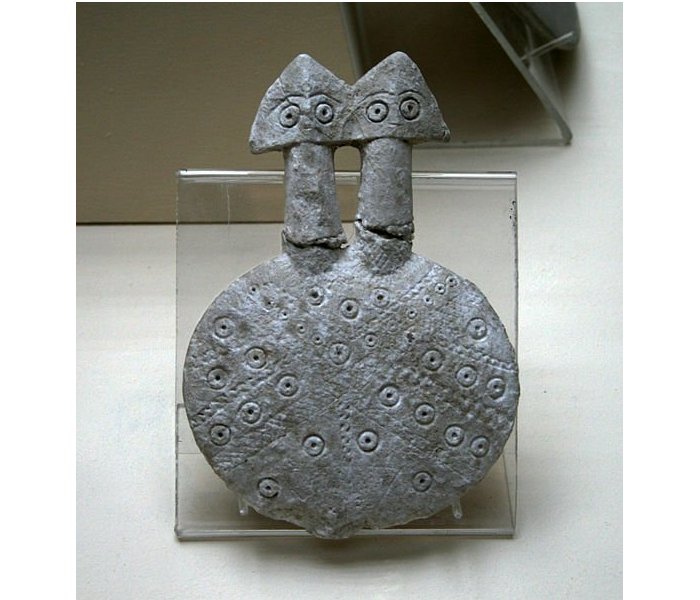
Kültepe Idol. A two-headed mother goddess figurine from Kültepe, an archaeological site in Turkey. This figurine is part of a larger group of flat marble goddess figurines found in Kültepe. Artifact located at the Museum of Anatolian Civilizations, Turkey. Image credit: Noumenon.
The region of Kültepe is a very old place with a history going back millennia and many archaeological findings attest to this history.
The place was inhabited continuously from the Chalcolithic to Roman times, and flourished as an important Hattic center, Hittite and Hurrian city, containing a large merchant colony dated to the Old Assyrian Empire from ca. 21st to 18th centuries BC.
It is a very old place. Today, Kültepe is an archaeological site, about 20 km southwest from the center of Kayseri. Once, it was the capital of the ancient Kingdom of Kanesh, a residental area of indigenous people, and its market place Karum was established in 1950-1650 B.C. by Assyrian colonies. A part of Karum was inhabited by both foreign and native traders who conducted their business.
Kültepe's geographical location contributed much to the place's flourishing period by the end of 3,000 BC to the first quarter of 2,000 BC. Kültepe's culture, politics, and trade thrived between Anatolia, Syria, and Mesopotamia. Today’s Kültepe was established by Hittites in 2000 BC.
Thousands of clay tablets mention seventeen local city-kings who rose up against the famous Naram-Sin of Akkad (ruled c.2254-2218 BC).
It is the site of the discovery of the earliest traces of the Hittite language, and the earliest attestation of any Indo-European language, dated to the 20th century BC. Other tablets mention the conquest of the city of Assur by the kings of Eshnunna, the fall of Assur, and Hammurabi of Babylon.
Written by – A. Sutherland - AncientPages.com Senior Staff Writer
Copyright © AncientPages.com All rights reserved. This material may not be published, broadcast, rewritten or redistributed in whole or part without the express written permission of AncientPages.com
Expand for referencesMore From Ancient Pages
-
 Burnt Food Remains In Neolithic Cooking Pot Sheds Light On 5,000-Year-Old Food Preparation
Archaeology | Jan 23, 2024
Burnt Food Remains In Neolithic Cooking Pot Sheds Light On 5,000-Year-Old Food Preparation
Archaeology | Jan 23, 2024 -
 Earliest Document Written 2,100 Years Ago May Rewrite History Of The Basque Language
Archaeology | Nov 17, 2022
Earliest Document Written 2,100 Years Ago May Rewrite History Of The Basque Language
Archaeology | Nov 17, 2022 -
 Utukku: Sumerian Spirit From The Underground That Obeyed The Will Of God Anu
Featured Stories | Jun 17, 2016
Utukku: Sumerian Spirit From The Underground That Obeyed The Will Of God Anu
Featured Stories | Jun 17, 2016 -
 Mysterious Ancient Danube Stone Faces And The Fish Goddess Connection
Ancient Mysteries | Dec 18, 2019
Mysterious Ancient Danube Stone Faces And The Fish Goddess Connection
Ancient Mysteries | Dec 18, 2019 -
 How Did Hunter-Gatherers Spread Knowledge Of Pottery Vast Distances Over A Short Period Of Time?
Archaeology | Dec 28, 2022
How Did Hunter-Gatherers Spread Knowledge Of Pottery Vast Distances Over A Short Period Of Time?
Archaeology | Dec 28, 2022 -
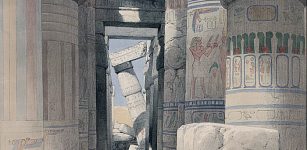 Karnak: One Of Largest Temple Complexes In The World And Its Spectacular View
Civilizations | Sep 5, 2015
Karnak: One Of Largest Temple Complexes In The World And Its Spectacular View
Civilizations | Sep 5, 2015 -
 Five Witchcraft Myths Debunked By An Expert
Featured Stories | Oct 27, 2023
Five Witchcraft Myths Debunked By An Expert
Featured Stories | Oct 27, 2023 -
 Facial Reconstruction Of Ancient Inhabitants Of Sagalassos Make Them Almost Real
Archaeology | May 31, 2019
Facial Reconstruction Of Ancient Inhabitants Of Sagalassos Make Them Almost Real
Archaeology | May 31, 2019 -
 On This Day In History: Gerardus Mercator Famous Mapmaker Of All Time Died – On Dec 2, 1594
News | Dec 2, 2016
On This Day In History: Gerardus Mercator Famous Mapmaker Of All Time Died – On Dec 2, 1594
News | Dec 2, 2016 -
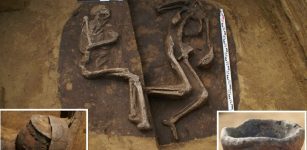 Unusual Grave Of The Trzciniec Culture Is An Archaeological Puzzle
Archaeology | Dec 23, 2019
Unusual Grave Of The Trzciniec Culture Is An Archaeological Puzzle
Archaeology | Dec 23, 2019 -
 Varggrottan: Mysterious ‘Wolf Cave’ Was Home To Neanderthals 130,000 Years Ago – Oldest Human Dwelling In Scandinavia
Featured Stories | May 15, 2023
Varggrottan: Mysterious ‘Wolf Cave’ Was Home To Neanderthals 130,000 Years Ago – Oldest Human Dwelling In Scandinavia
Featured Stories | May 15, 2023 -
 Ancient Mystery Of A Lost Polar Civilization That Vanished Without A Trace
Ancient Mysteries | Dec 27, 2020
Ancient Mystery Of A Lost Polar Civilization That Vanished Without A Trace
Ancient Mysteries | Dec 27, 2020 -
 Teutonic Knights – Facts And History About The Christian Military Order
Featured Stories | Feb 21, 2019
Teutonic Knights – Facts And History About The Christian Military Order
Featured Stories | Feb 21, 2019 -
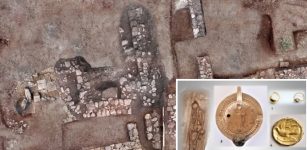 Ruins Of Long-Lost Ancient City Of Tenea Built By Trojans Discovered
Archaeology | Nov 21, 2018
Ruins Of Long-Lost Ancient City Of Tenea Built By Trojans Discovered
Archaeology | Nov 21, 2018 -
 Lifestyle And Face Of 7th-Century Anglo-Saxon Teen – Reconstructed
Archaeology | Jun 20, 2023
Lifestyle And Face Of 7th-Century Anglo-Saxon Teen – Reconstructed
Archaeology | Jun 20, 2023 -
 On This Day In History: Sweden Declares War On Its Ally The United Kingdom – On Nov 17, 1810
News | Nov 17, 2016
On This Day In History: Sweden Declares War On Its Ally The United Kingdom – On Nov 17, 1810
News | Nov 17, 2016 -
 Hacksilber Hoard Dated To 11th Century BC: Eastern Mediterranean Silver Trade Reconstructed
Archaeology | Jul 5, 2021
Hacksilber Hoard Dated To 11th Century BC: Eastern Mediterranean Silver Trade Reconstructed
Archaeology | Jul 5, 2021 -
 Mystery Of The Cave Where People Vanish Or Become Disoriented
Featured Stories | Jan 2, 2024
Mystery Of The Cave Where People Vanish Or Become Disoriented
Featured Stories | Jan 2, 2024 -
 Machu Picchu Was Built With The Royal Unit System – New Research Suggests
Archaeology | Jan 14, 2021
Machu Picchu Was Built With The Royal Unit System – New Research Suggests
Archaeology | Jan 14, 2021 -
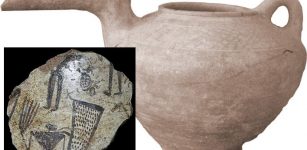 7,000-Year-Old Tepe Ozbaki Mounds Yielded Valuable Relics – But Now The Site Is In Trouble
Archaeology | Nov 25, 2020
7,000-Year-Old Tepe Ozbaki Mounds Yielded Valuable Relics – But Now The Site Is In Trouble
Archaeology | Nov 25, 2020

